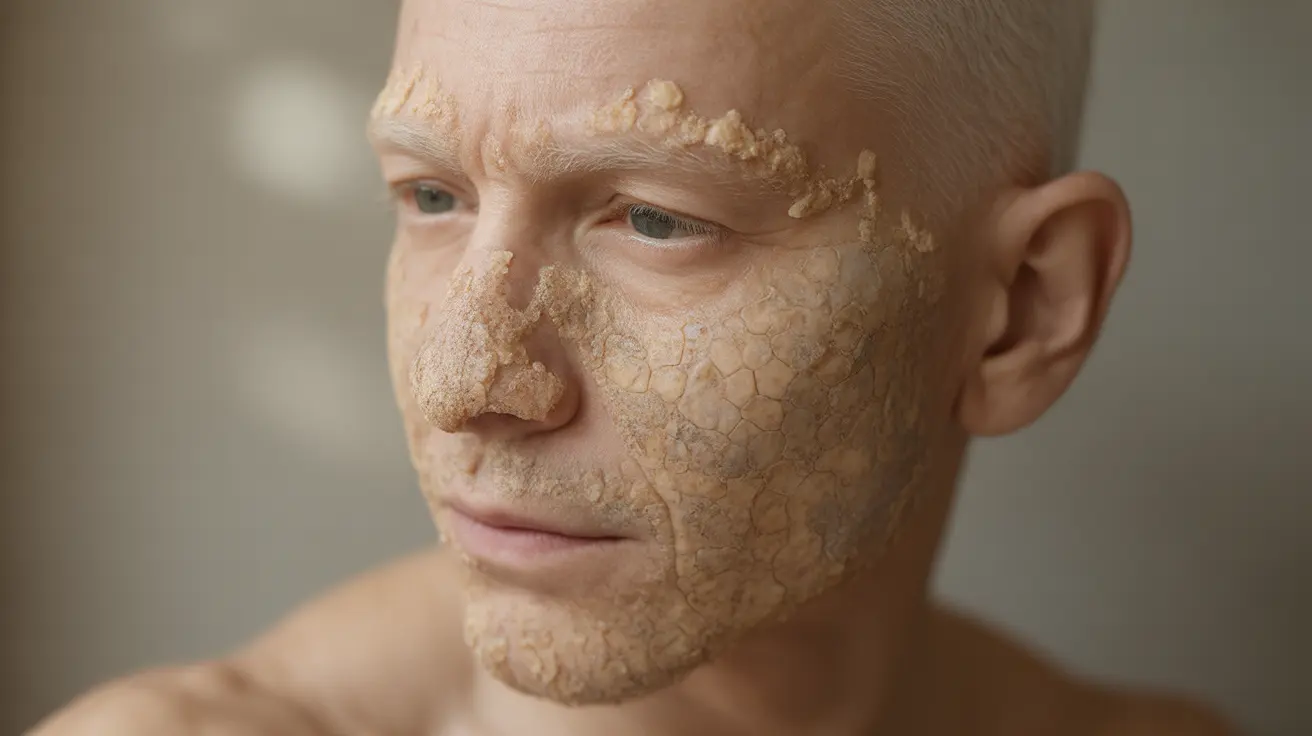Ichthyosis vulgaris is a genetic skin condition that affects the body's natural process of skin shedding and renewal. This inherited disorder causes dry, thick, and scaly skin that can significantly impact a person's quality of life. Understanding its symptoms, treatments, and management strategies is crucial for those affected by this condition.
While ichthyosis vulgaris is a lifelong condition, various treatment options and lifestyle modifications can help manage symptoms effectively. This comprehensive guide explores everything you need to know about living with and treating this skin condition.
Key Symptoms and Diagnostic Process
Ichthyosis vulgaris typically presents with distinctive characteristics that help healthcare providers make an accurate diagnosis:
- Dry, scaly skin with a fish-scale appearance
- Thickened, rough patches of skin
- Gray, brown, or light-colored scales
- More prominent scaling on the legs, arms, and trunk
- Decreased or absent skin markings on palms and soles
- Deep, painful cracks in the skin
Diagnosis usually involves a thorough physical examination and detailed family history. In some cases, healthcare providers may perform a skin biopsy to confirm the diagnosis and rule out other conditions.
Managing Symptoms at Home
Several effective home care strategies can help control ichthyosis vulgaris symptoms:
- Regular application of moisturizers immediately after bathing
- Use of gentle, fragrance-free cleansers
- Daily gentle exfoliation with soft brushes or cloths
- Humidifier use to maintain optimal air moisture
- Lukewarm (not hot) baths or showers
- Regular use of urea-based creams or lotions
Seasonal Changes and Symptom Management
Weather changes can significantly impact ichthyosis vulgaris symptoms. Cold, dry winter months often lead to worsening symptoms, while humid summer conditions may provide some relief. Understanding these patterns helps in developing effective management strategies:
Winter Management
- Increase moisturizer application frequency
- Use thicker, more emollient creams
- Keep indoor humidity levels optimal
- Protect skin from harsh weather conditions
Summer Management
- Use lighter moisturizers
- Take advantage of natural humidity
- Continue regular skin care routine
- Monitor sun exposure and use appropriate protection
Associated Skin Conditions
Ichthyosis vulgaris often occurs alongside other skin conditions, requiring comprehensive management approaches:
- Atopic dermatitis (eczema)
- Keratosis pilaris
- Allergic reactions
- Asthma and hay fever
Medical Treatments and Interventions
For more severe cases, medical professionals may recommend various treatments:
Topical Treatments
- Prescription moisturizers
- Alpha-hydroxy acids
- Urea-based preparations
- Topical retinoids
Systemic Treatments
- Oral retinoids (in severe cases)
- Anti-inflammatory medications
- Antihistamines for associated conditions
Frequently Asked Questions
What are the typical symptoms of ichthyosis vulgaris, and how is it diagnosed? The condition presents with dry, scaly skin resembling fish scales, particularly on the legs, arms, and trunk. Diagnosis involves physical examination, family history review, and sometimes skin biopsy.
What are some effective home treatments for managing ichthyosis vulgaris symptoms? Regular moisturizing, gentle exfoliation, using mild cleansers, and maintaining proper humidity levels are essential home treatments. Applying moisturizers immediately after bathing is particularly effective.
How does seasonality affect ichthyosis vulgaris symptoms, and what can be done to alleviate them? Symptoms typically worsen in cold, dry weather and improve in humid conditions. Adjusting skincare routines seasonally, using appropriate moisturizers, and maintaining indoor humidity can help manage seasonal changes.
What are the common co-occurring conditions with ichthyosis vulgaris, such as eczema or keratosis pilaris? Common co-occurring conditions include atopic dermatitis (eczema), keratosis pilaris, allergies, and asthma. Each condition may require specific management strategies alongside ichthyosis vulgaris treatment.
What are the potential benefits and risks of using retinoids in treating severe cases of ichthyosis vulgaris? Retinoids can effectively reduce scaling and improve skin texture in severe cases. However, they may cause side effects such as skin irritation, dryness, and sensitivity to sun exposure. Medical supervision is essential when using retinoids.




